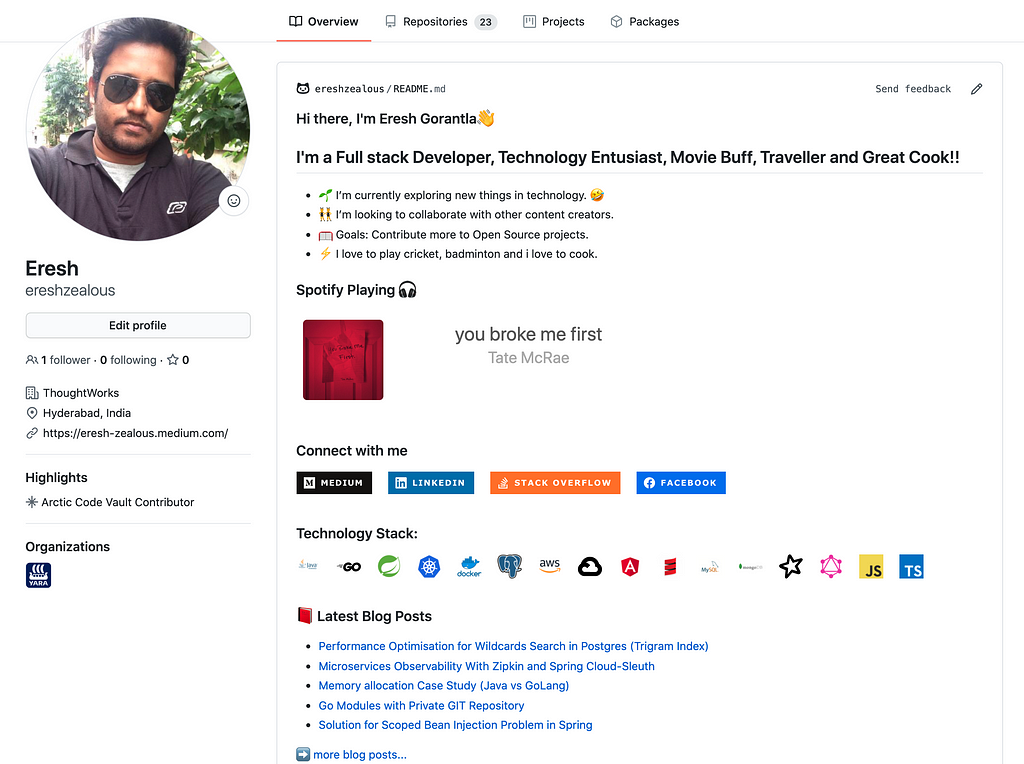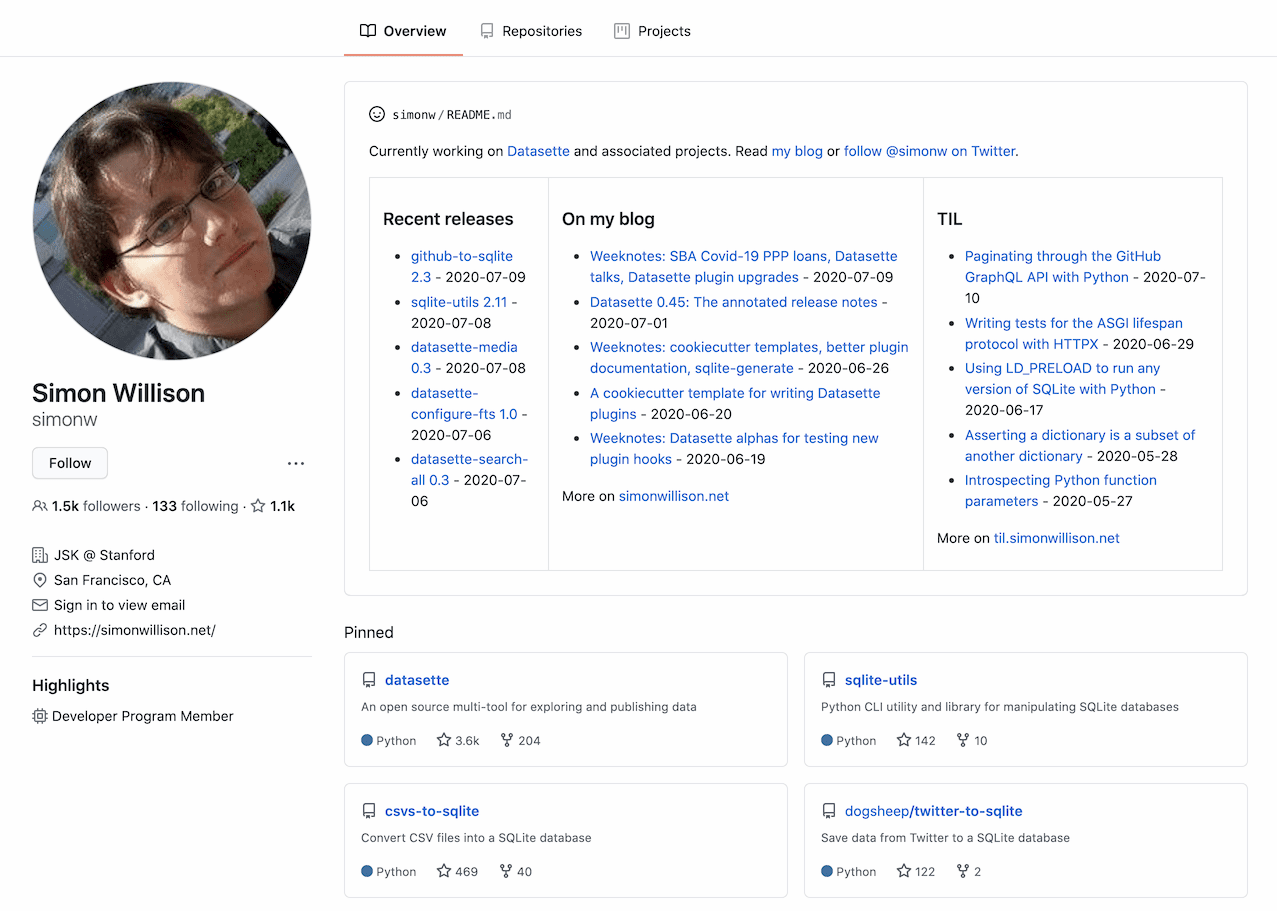What makes a good GitHub README? It’s a question almost every developer has asked as they’ve typed:
- Smart controller for the fan (s) of your Mac. Contribute to marcolinuz/keep-cool development by creating an account on GitHub.
- Github Profile README Generatortool provides a beautiful UI to create the same. It lets you add the latest add-ons like visitors count, shields, dev icons, github stats, etc to your README in just one click. Just fill the details like Name, Tagline, Dev Platforms Username, Current Work, Portfolio, Blogetc using minimal UI. Try the tool: live demo.

The main idea of github-readme-stats is to serve github user's stats dynamically with the help of github api and rendered with svgs.
As far as we can tell, nobodyhasaclearanswerforthis, yet you typically know a good GitHub README when you see it. The best explanation we’ve found is the README Wikipedia entry, which offers a handful suggestions.
We set out to flex our data science muscles, and see if we could come up with an objective standard for what makes a good GitHub README using machine learning. The result is the GitHub README Analyzer demo, an experimental tool to algorithmically improve the quality of your GitHub README’s.
The complete code for this project can be found in our iPython Notebook here.
Thinking About the GitHub README Problem
Understanding the contents of a README is a problem for NLP, and it’s a particularly hard one to solve.
To start, we made some assumptions about what makes a GitHub README good:
- Popular repositories probably have good README’s
- Popular repositories should have more stars than unpopular ones
- Each programming language has a unique pattern, or style
With those assumptions in place, we set out to collect our data, and build our model.
Approaching the Solution
Cool Github Readme Profile
Step One: Collecting Data
First, we needed to create a dataset. We decided to use the 10 most popular programming languages on GitHub by the number of repositories, which were Javascript, Java, Ruby, Python, PHP, HTML, CSS, C++, C, and C#. We used the GitHub API to retrieve a count of repos by language, and then grabbed the README’s for the 1,000 most-starred repos per language. We only used README’s that were encoded in either markdown or reStructuredText formats.
We scraped the first 1,000 repositories for each language. Then we removed any repository the didn’t have a GitHub README, was encoded in an obscure format, or was in some way unusable. After removing the bad repos, we ended up with — on average — 878 README’s per language.
Step Two: Data Scrubbing
We needed to then convert all the README’s into a common format for further processing. We chose to convert everything to HTML. When we did this, we also removed common words from a stop word list, and then stemmed the remaining words to find the common base — or root — of each word. We used NLTK Snowball stemmer for this. We also kept the original, unstemmed words to be used later for making recommendations from our model for the demo (e.g. instead of recommending “instal” we could recommend “installation”).
This preprocessing ensured that all the data was in a common format and ready to be vectorized.
Step Three: Feature Extraction
Now that we have a clean dataset to work with, we need to extract features. We used scikit-learn, a Python machine learning library, because it’s easy to learn, simple, and open sourced.
We extracted five features from the preprocessed dataset:
- 1-grams from the headers (<h1>, <h2>, <h3>)
- 1-grams from the text of the paragraphs (<p>)
- Count of code snippets (<pre>)
- Count of images (<img>)
- Count of characters, excluding HTML tags
To build feature vectors for our README headers and paragraphs, we tried TF-IDF, Count, and Hashing vectorizers from scikit-learn. We ended up using TF-IDF, because it had the highest accuracy rate. We used 1-grams, because anything more than that became computationally too expensive, and the results weren’t noticeably improved. If you think about it, this makes sense. Section headers tend to be single words, like Installation, or Usage.
Since code snippets, images, and total characters are numerical values by nature, we simply casted them into a 1×1 matrix.
Step Four: Benchmarking
We benchmarked 11 different classifiers against each other for all five features. And, then repeated this for all 10 programming languages. In reality, there was an 11th “language,” which was the aggregate of all 10 languages. We later used this 11th (i.e. “All”) language to train a general model for our demo. We did this to handle situations where a user was trying to analyze a README representing a project in a language that wasn’t one of the top 10 languages on GitHub.
We used the following classifiers: Logistic Regression, Passive Aggressive, Gaussian Naive Bayes, Multinomial Naive Bayes, Bernoulli Naive Bayes, Nearest Centroid, Label Propagation, SVC, Linear SVC, Decision Tree, and Extra Tree.
We would have used nuSVC, but as Stack Overflow can explain, it has no direct interpretation, which prevented us from using it.
In all, we created 605 different models (11 classifiers x 5 features x 11 languages — remember, we created an “All” language to produce an overall model, hence 11.). We picked the best model per feature per programming language, which means we ended up using 55 unique models (5 features x 11 languages).
View the interactive chart here. Find the detailed error rates broken out by language here.
Some notes on how we trained:
- Before we started, we divided our dataset into a training set, and a testing set: 75%, and 25%, respectively.
- After training the initial 605 models, we benchmarked their accuracy scores against each other.
- We selected the best models for each feature, and then we saved (i.e. pickled) the model. Persisting the model file allowed us to skip the training step in the future.
To determine the error rate of the models, we calculated their mean squared errors. The model with the least mean squared errors was selected for each corresponding feature, and language – 55 models were selected in total.
Step Five: Putting it All Together
Cool Github Readme
With all of this in place, we can now take any GitHub repository, and score the README using our models.
For non-numerical features, like Headers and Paragraphs, the model tries to make recommendations that should improve the quality of your README by adding, removing, or changing every word, and recalculating the score each time.
For the numerical-based features, like the count of <pre>, <img> tags, and the README length, the model incrementally increases and decreases values for each feature. It then re-evaluates the score with each iteration to determine an optimized recommendation. If it can’t produce a higher score with any of the changes, no recommendation is given.


Try out the GitHub README Analyzer now.
Conclusion
Some of our assumptions proved to be true, while some were off. We found that our assumption about headers and the text from paragraphs correlated with popular repositories. However, this wasn’t true for the length of a repository, or the count of code samples and images.
The reason for this may stem from the fact that n-gram based features, like Headers and Paragraphs, train on hundreds or thousands of variables per document. Whereas numerical features only trains on one variable per document. Hence, ~1,000 repositories per programming language were enough to train models for n-gram based features, but it wasn’t enough to train decent numerical-based models. Another reason might be that numerical-based features had noisy data, or the dataset didn’t correlate to the number of stars a project had.
When we tested our models, we initially found it kept recommending us to significantly shorten every README (e.g. it recommended that one README get shortened from 408 characters down to 6!), remove almost all the images and code samples. This was counterintuitive, so after plotting the data, we learned that a big part of our dataset had zero images, zero code snippets, or was less than 1,500 characters.
This explains why our model behaved so poorly at first for the length, code sample, and image features. To account for this, we took an additional step in our preprocessing and removed any README that was less than 1,500 characters, contained zero images, or zero code samples. This dramatically improved the results for images and code sample recommendations, but the character length recommendation did not improve significantly. In the end, we chose to remove the length recommendation from our demo.
Think you can come up with a better model? Check out our iPython Notebook covering all of the steps from above, and tweet us @Algorithmia with your results
Below is the numerical feature distribution for images, code snippets, and character length all README’s. Find the detailed histograms broken out by language here.

Best Github Readme Template
Algorithmia named a leader in GigaOm Radar for Evaluating Machine Learning Operations Arize AI partners with Algorithmia to enable better MLOps and observability for enterprises
Arize AI partners with Algorithmia to enable better MLOps and observability for enterprises July 16, 2020
Github recently released profile README feature, which became a hit among developers. As it provides good place to showcase current projects and skills, many addons like visitors-count, github-stats has been developed.
I got tired of updating my github profile README again and again to get:
- uniformity in dev/social icons
- cool and minimal look
- new features like visitors-count or github-stats
So I came up with an amazing tool to make this an easy experience. Github Profile README Generator tool provides a beautiful UI to create the same.
It lets you add the latest add-ons like visitors count, shields, dev icons, github stats, etc to your README in just one click.
Just fill the details like Name, Tagline, Dev Platforms Username, Current Work, Portfolio, Blog etc using minimal UI.
Try the tool: live demo
Click on Generate README button after filling the form, to get your README in markdown. You can preview the README too.
This project is developed using Gatsby and can be found on github at Github Profile Readme Generator
Give it a try if it sounds interesting.
